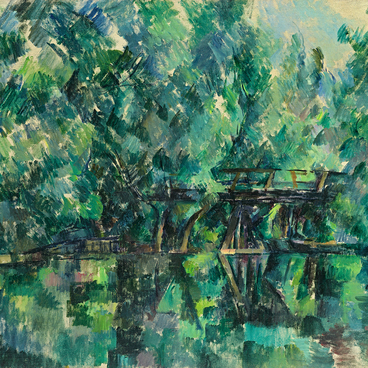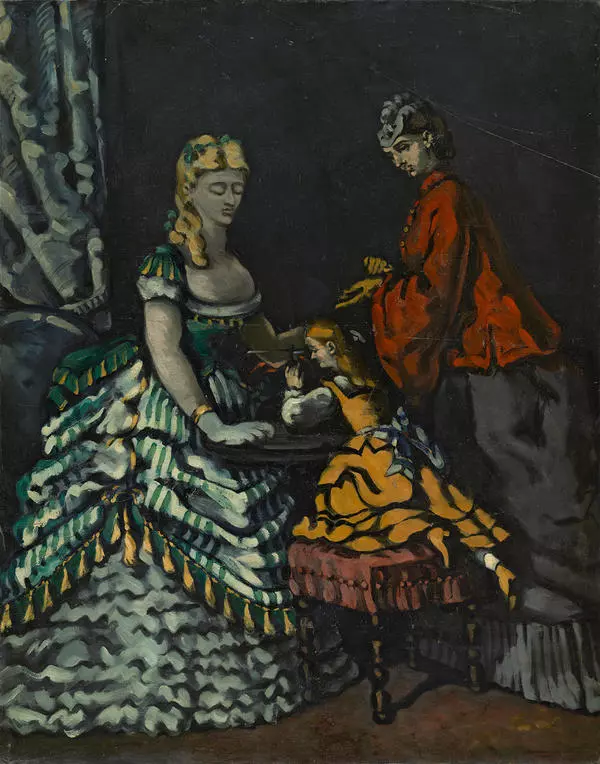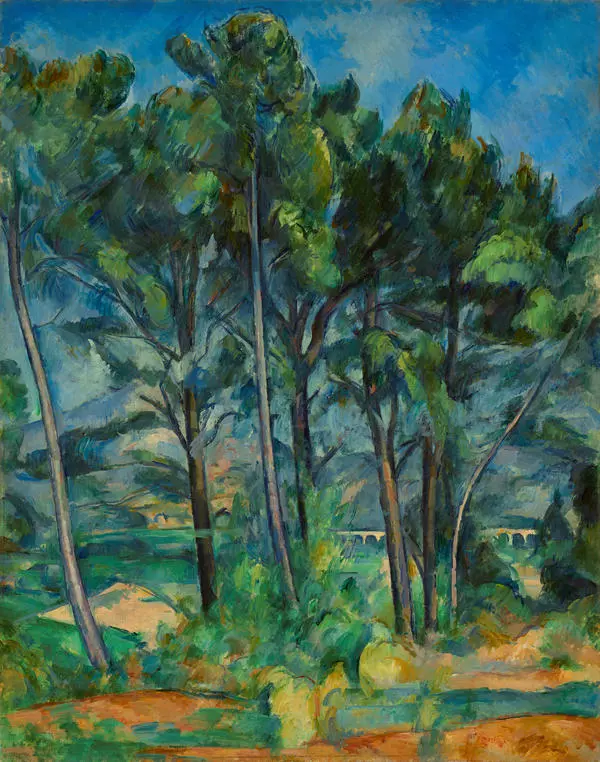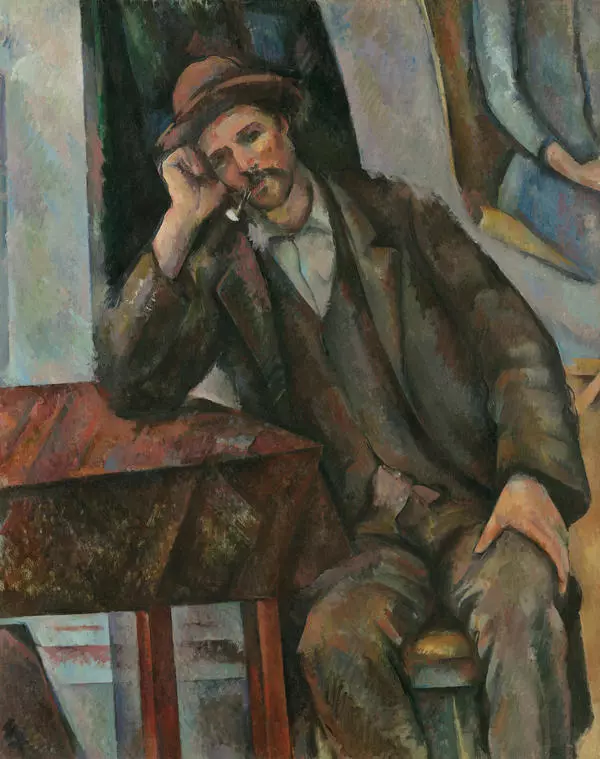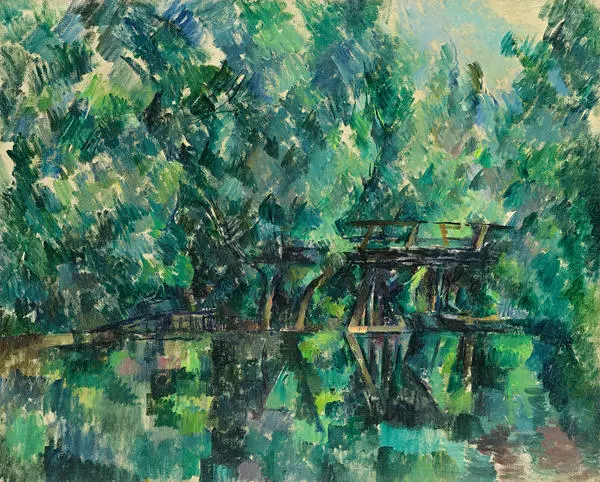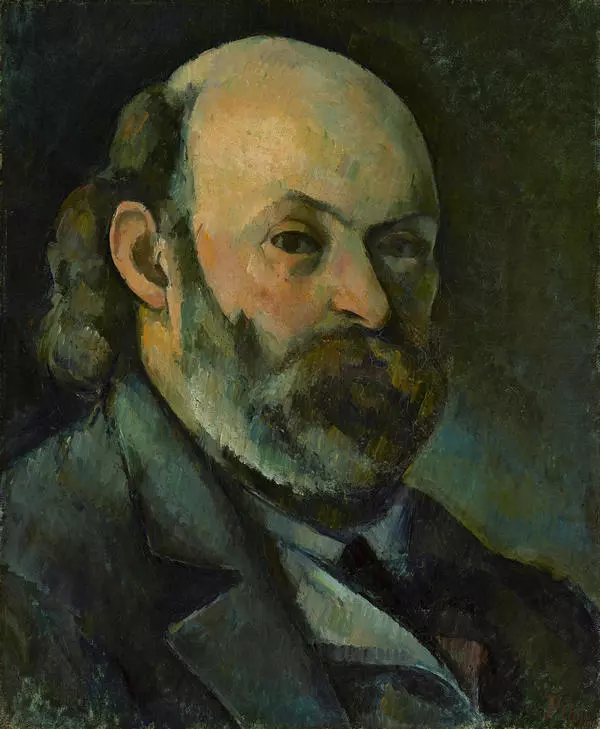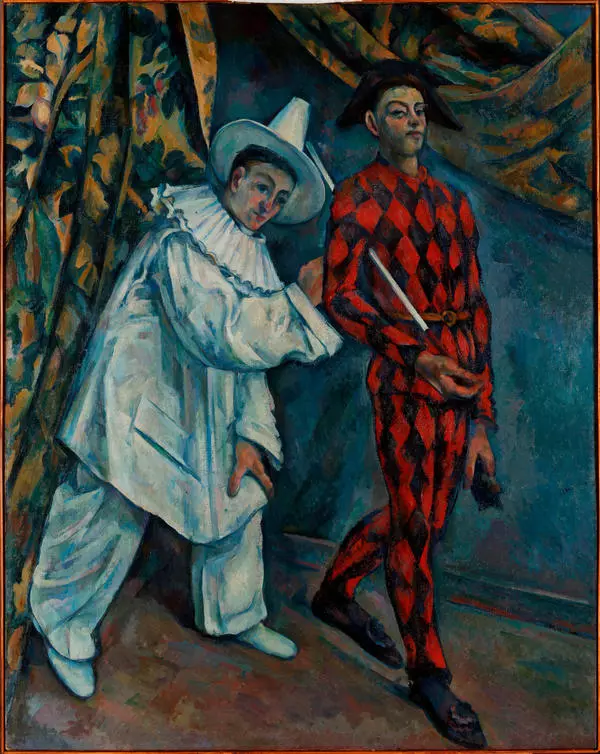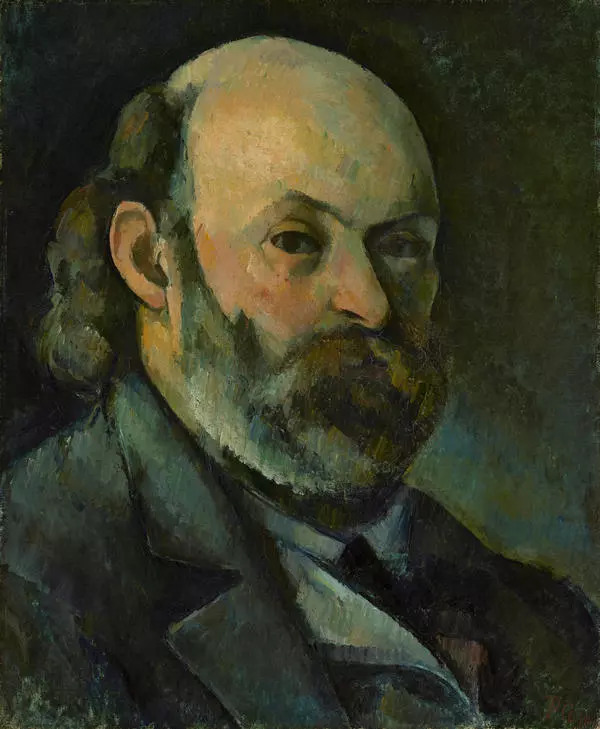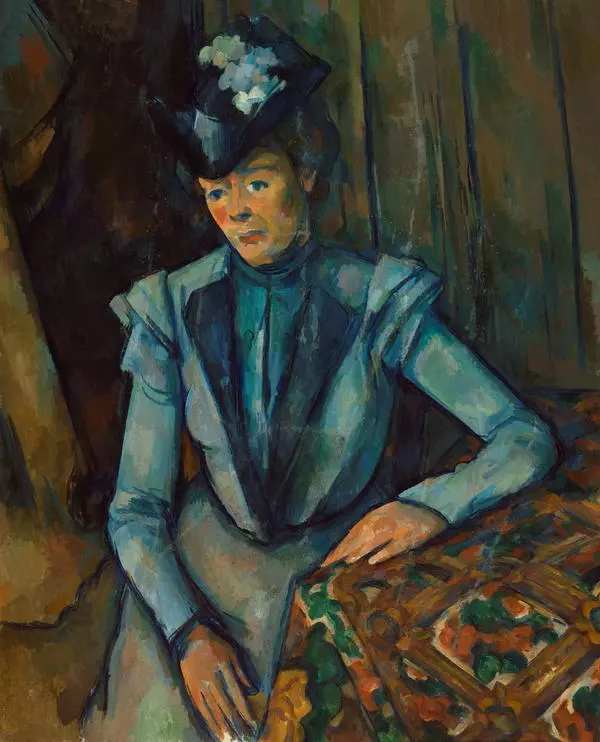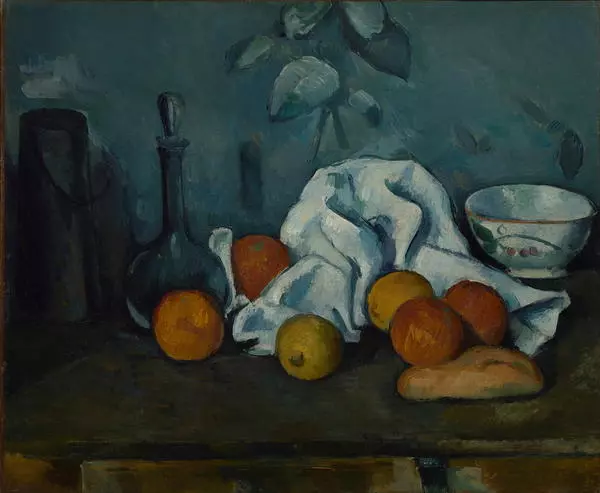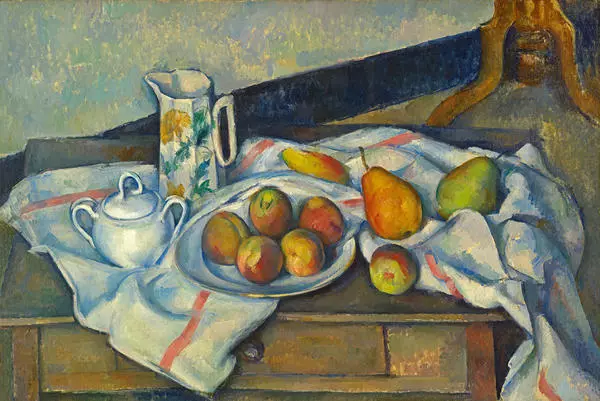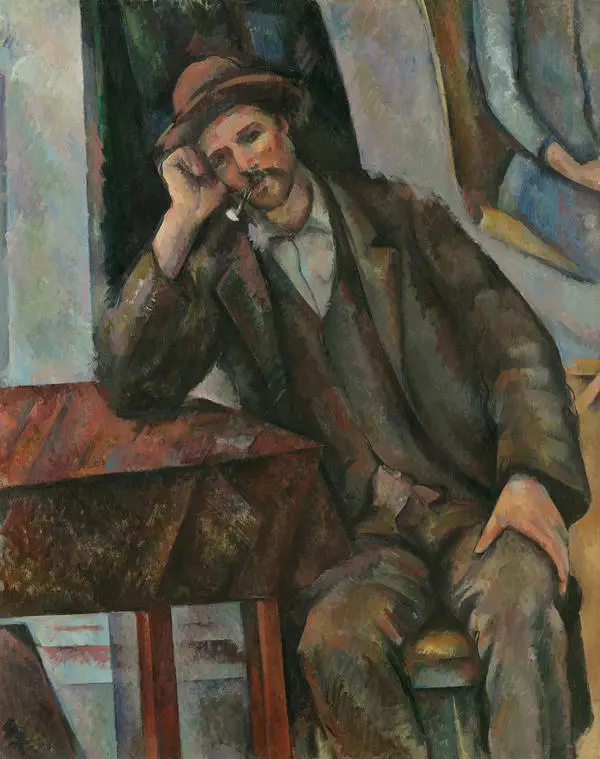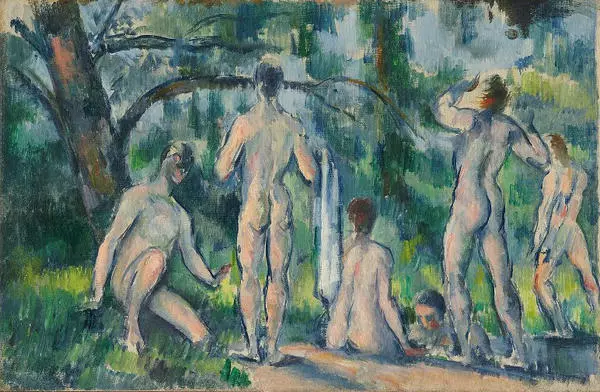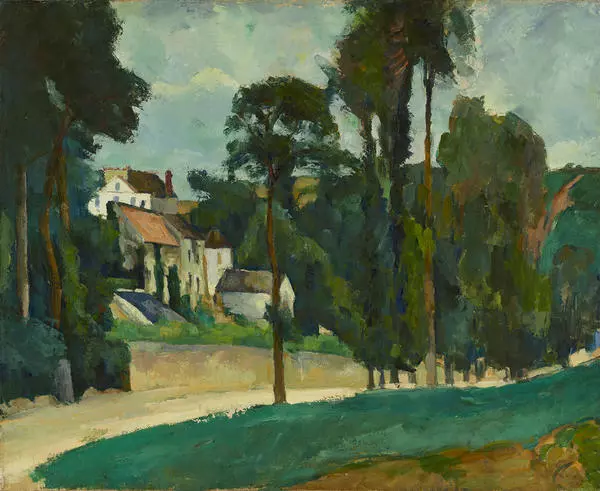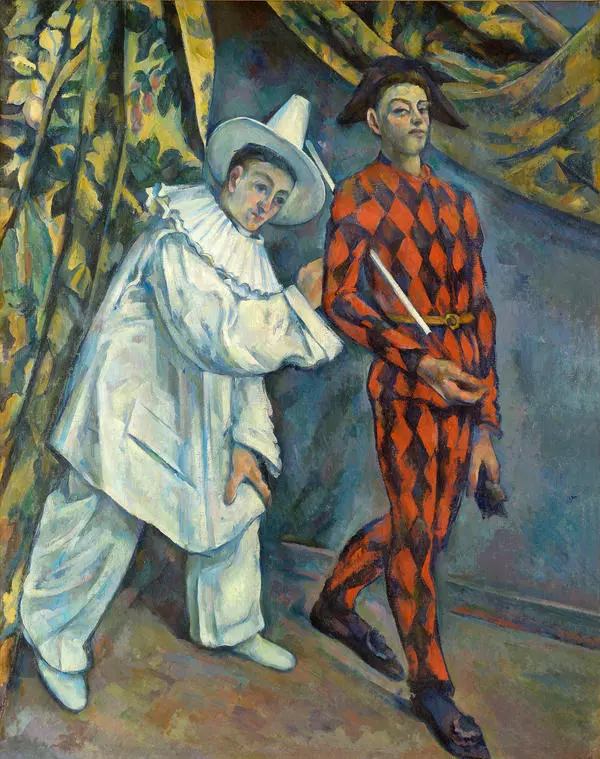Most landscapes painted by Cézanne are dedicated to the nature of southern France, where the artist was born and spent most of his life. The painting Trees in a Park (Jas-de-Bouffan) depicts a mansion located near Aix-en-Provence. It belonged to the artist’s family from 1859 to 1899. Cézanne tries to bring out the main unchanging characteristics of the landscape in his interpretation of this motif. Instead of analysis he works on synthesis, and he avoids decomposition of color to assert its materialness. As opposed to an impressionist study-like vision, the master searched for grandiosity of forms. Austere geometrical shapes of ochre-colored houses are in contrast with the greenish treetops and the bright blue sky.
To Cézanne, the real motif always serves as an occasion to demonstrate the majestic processes of the world’s geological structure. This can be seen in the precisely organized layers of space, as well as the generalized interpretation of volumes. The artist perceives the visible world as a total of various embodiments of a single material substance, which is subject to the laws of the universe.
To Cézanne, the real motif always serves as an occasion to demonstrate the majestic processes of the world’s geological structure. This can be seen in the precisely organized layers of space, as well as the generalized interpretation of volumes. The artist perceives the visible world as a total of various embodiments of a single material substance, which is subject to the laws of the universe.



